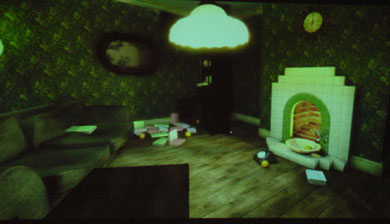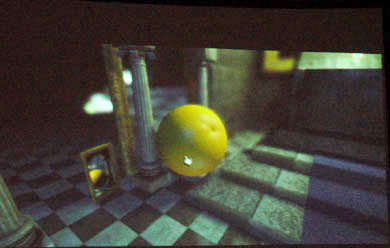Someone over on CGTalk posted a link to a University of Buffalo news story about a “self-aware” computational agent being incorporated into virtual reality.
We started thinking, ‘What happens if you put a powerful artificial intelligence system — which is what Stu has developed — together with drama and stories?
Not sure why they’re focusing on an interactive “movie” version to be honest, since I don’t see any need to have a narrative structure of any kind. I can’t think of a better drama than real life.
There’s a couple of QT videos to watch as well. Might check out the second one – halfway through it starts to get interesting. I can imagine just programming a particular set of behaviors into an AI and letting it do it’s own thing. What could be more interesting than watching an AI develop (and perhaps multiply) in cyberspace?


